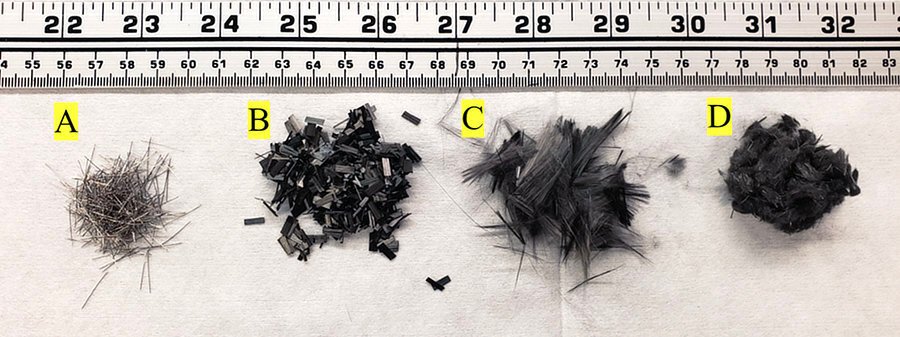Reinventing Structural Durability with Recycled Carbon Fiber
Imagine a world where concrete, an essential building material, becomes dramatically stronger, lighter, and more resistant to environmental wear and tear. What if I told you we’re closer to achieving that than you may think? Welcome to the exciting frontier of recycled carbon fiber-reinforced concrete, a groundbreaking innovation that holds immense potential for transforming the construction industry, as revealed by recent research from the University of Texas.
Testing Recycled Carbon Fiber Reinforced Concrete
According to the UT white paper, carbon fiber-reinforced concrete stands as an attractive alternative for civil infrastructure due to its high strength, light weight, and exceptional resistance to corrosion. Even more remarkable is the potential of ultra-high-performance concrete, which boasts incredible mechanical properties by utilizing randomly oriented steel fibers, improving the overall strength and durability of the material.
For the first time, researchers have demonstrated the successful use of recycled carbon fiber in the production of ultra-high-performance concrete, offering a cost-effective and sustainable solution without sacrificing strength and durability. This breakthrough proves crucial in surmounting the market entry barrier posed by the high cost of virgin carbon fiber.
Virgin vs Recycled Carbon Fiber

From UT investigation:
Different fiber types mixed into concrete. (A) steel fibers; (B) Hexcel carbon platelets; (C) Zoltek carbon fiber; (D) recycled carbon fiber.
However, incorporating recycled carbon fiber into concrete isn’t just a matter of mixing the two. The study carried out an in-depth exploration of process structure-properties relationships to ensure the most effective use of recycled carbon fiber. Factors that could affect the concrete’s mechanical properties, such as pore formation and poor fiber distribution, were meticulously evaluated.
In the mix design experiment, recycled carbon fiber and ultra-high-performance concrete were assessed for mechanical properties. The results were then compared with an aerospace-grade and low-cost commercial carbon fiber utilizing the same mix design. Astonishingly, the recycled carbon fiber held its own, promising a revolution in construction sustainability without any compromise on the overall performance.
Adding a layer of depth to this study, the microstructure of the concrete samples was non-destructively evaluated using high-resolution micro X-ray computed tomography. This process offers 3D quantitative spatial pore size distribution information and detailed insight into fiber clumping, providing an understanding of the intrinsic features of the concrete on a micro level.
As a result, the recycled carbon fiber reinforced concrete exhibited impressive compression, tension, and flexural properties, making it a highly attractive option for robust and resilient infrastructure development.
Greener Building
So, why should you care about this breakthrough? Because it’s poised to reshape the future of construction, making it more sustainable and affordable without sacrificing strength and performance. It will reduce the carbon footprint of building projects, increase their lifespan, and contribute significantly to a greener and more durable built environment.
Recycled carbon fiber could well be the future of construction, ushering in an era of high-performance concrete that stands the test of time. As manufacturers and developers, it’s an exciting development that we can’t afford to ignore. The opportunity to strengthen our products and contribute positively to the world is truly groundbreaking.
We’re standing on the brink of a significant shift in construction and materials science, powered by recycled carbon fiber. Let’s embrace this revolution together and build a stronger, more sustainable future for all.
Read the UT White Paper:
Patchen A, Young S, Penumadu D (2022) An Investigation of Mechanical Properties of Recycled Carbon Fiber Reinforced Ultra-High-Performance Concrete, MDPI website, accessed 22 July 2023.
